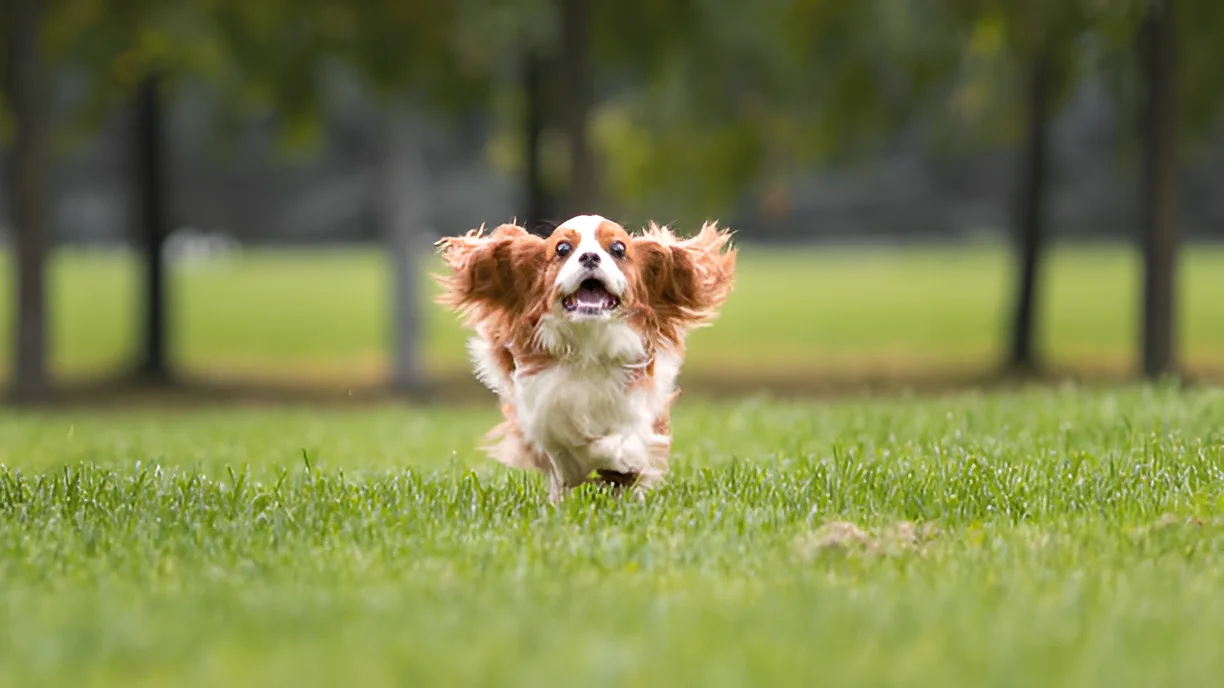The amount of space a dog needs to run depends on its breed, size, and energy levels, but generally, dogs benefit from having ample room to exercise and play. Let’s explore the factors that determine how much space a dog needs, the benefits of adequate exercise, and practical solutions for providing your dog with enough room to run.
Ensuring that your dog has enough space to run and play is crucial for their physical and mental well-being. While the specific space requirements can vary based on the dog’s breed, size, and energy levels, all dogs need regular exercise to stay healthy and happy. This comprehensive guide will delve into the factors that influence a dog’s space needs, the benefits of adequate exercise, and practical tips for providing your dog with the space they need.
Factors Determining Space Needs
1. Breed and Size
- Large Breeds: Larger breeds, such as German Shepherds, Labradors, and Golden Retrievers, typically require more space to run and play. These dogs have higher energy levels and need ample room to stretch their legs.
- Small Breeds: Smaller breeds, like Chihuahuas, Pomeranians, and Dachshunds, may need less space but still benefit from regular exercise. Their smaller size allows them to get sufficient exercise in smaller areas.
2. Energy Levels
- High-Energy Dogs: Breeds known for their high energy levels, such as Border Collies, Australian Shepherds, and Jack Russell Terriers, need more space and frequent exercise to burn off their energy.
- Low-Energy Dogs: Breeds with lower energy levels, like Bulldogs, Basset Hounds, and Shih Tzus, may require less space but still need regular walks and playtime to stay healthy.
3. Age and Health
- Puppies: Puppies are generally more energetic and require more space to run and play. Providing a safe and secure area for them to explore and exercise is essential for their development.
- Senior Dogs: Older dogs may have lower energy levels and reduced mobility, but they still need regular exercise to maintain their health. Adjusting the intensity and duration of exercise to suit their needs is important.
Benefits of Adequate Exercise
1. Physical Health
- Weight Management: Regular exercise helps prevent obesity and related health issues, such as diabetes and joint problems. Ensuring your dog has enough space to run and play can help maintain a healthy weight.
- Cardiovascular Health: Exercise strengthens the heart and improves circulation, reducing the risk of cardiovascular diseases.
2. Mental Stimulation
- Behavioral Benefits: Adequate exercise can reduce behavioral issues, such as excessive barking, chewing, and digging, by providing an outlet for your dog’s energy.
- Cognitive Function: Physical activity stimulates the brain and can improve cognitive function, helping to keep your dog mentally sharp.
3. Emotional Well-Being
- Stress Reduction: Exercise releases endorphins, which can help reduce stress and anxiety in dogs. Providing enough space for your dog to run and play can contribute to their overall emotional well-being.
- Bonding: Spending time exercising and playing with your dog strengthens the bond between you and your pet, enhancing your relationship.
Practical Solutions for Providing Space
1. Backyard Space
- Fenced Yard: A securely fenced yard provides a safe area for your dog to run and play off-leash. Ensure the fence is high enough to prevent escapes and check for any gaps or weak spots.
- Designated Play Area: Create a designated play area within your yard with toys, agility equipment, and shaded spots for rest. This can help keep your dog entertained and active.
2. Dog Parks
- Off-Leash Areas: Dog parks with off-leash areas allow dogs to run freely and socialize with other dogs. Regular visits to the dog park can provide the exercise and mental stimulation your dog needs.
- Safety Considerations: Ensure the dog park is well-maintained and follow park rules to ensure a safe and enjoyable experience for your dog.
3. Indoor Exercise
- Interactive Toys: Use interactive toys, such as puzzle feeders and treat-dispensing toys, to keep your dog mentally and physically stimulated indoors.
- Indoor Play: Engage in indoor play activities, such as fetch, tug-of-war, and hide-and-seek, to provide exercise when outdoor space is limited.
4. Regular Walks and Hikes
- Daily Walks: Regular walks are essential for all dogs, regardless of their size or energy levels. Aim for at least one to two walks per day, adjusting the duration and intensity based on your dog’s needs.
- Hiking: For more adventurous dogs, hiking can provide an excellent opportunity for exercise and exploration. Choose dog-friendly trails and ensure your dog is well-prepared for the hike.
Space Requirements by Dog Size
1. Small Dogs
- Indoor Space: Small dogs can get sufficient exercise indoors with regular play and interactive toys. However, they still benefit from outdoor walks and playtime.
- Outdoor Space: A small yard or designated play area can provide enough space for small dogs to run and play. Regular visits to the dog park can also be beneficial.
2. Medium Dogs
- Indoor Space: Medium-sized dogs need more space to move around indoors. Ensure they have enough room to stretch and play, and provide regular mental stimulation.
- Outdoor Space: A medium-sized yard or frequent visits to the dog park can provide the exercise and space medium dogs need. Regular walks and playtime are essential.
3. Large Dogs
- Indoor Space: Large dogs require ample indoor space to move comfortably. Ensure they have a designated area for rest and play, and provide regular mental challenges.
- Outdoor Space: Large dogs benefit from a spacious yard or frequent visits to large dog parks. Regular exercise, such as running and playing fetch, is crucial for their health.
Conclusion
The amount of space a dog needs to run depends on its breed, size, and energy levels, but generally, dogs benefit from having ample room to exercise and play. By understanding your dog’s specific needs and providing appropriate space and exercise opportunities, you can ensure their physical, mental, and emotional well-being. Whether through a spacious yard, regular visits to the dog park, or engaging indoor activities, meeting your dog’s exercise needs is essential for a happy and healthy life.
The photo featured below the post headline is Credit: Irina Nedikova/istockphoto
I hope you find this post helpful and informative. If Yes’ feel free to share it with your friends!
Frequently Asked Questions
How much space does a small dog need to run?
Small dogs can get sufficient exercise indoors with regular play and interactive toys, but they still benefit from outdoor walks and playtime. A small yard or designated play area can provide enough space for them to run and play.
Can large dogs live in apartments?
Yes, large dogs can live in apartments if they receive regular exercise and mental stimulation. Daily walks, visits to the dog park, and indoor play can help meet their exercise needs.
How often should I take my dog to the dog park?
The frequency of visits to the dog park depends on your dog’s energy levels and socialization needs. High-energy dogs may benefit from daily visits, while others may be content with a few visits per week.
What are some indoor exercises for dogs?
Indoor exercises for dogs include interactive toys, fetch, tug-of-war, and hide-and-seek. These activities can help keep your dog physically and mentally stimulated when outdoor space is limited.
How can I ensure my dog gets enough exercise in a small yard?
In a small yard, you can provide enough exercise by engaging in interactive play, using agility equipment, and taking regular walks. Visiting dog parks and hiking trails can also help meet your dog’s exercise needs.

